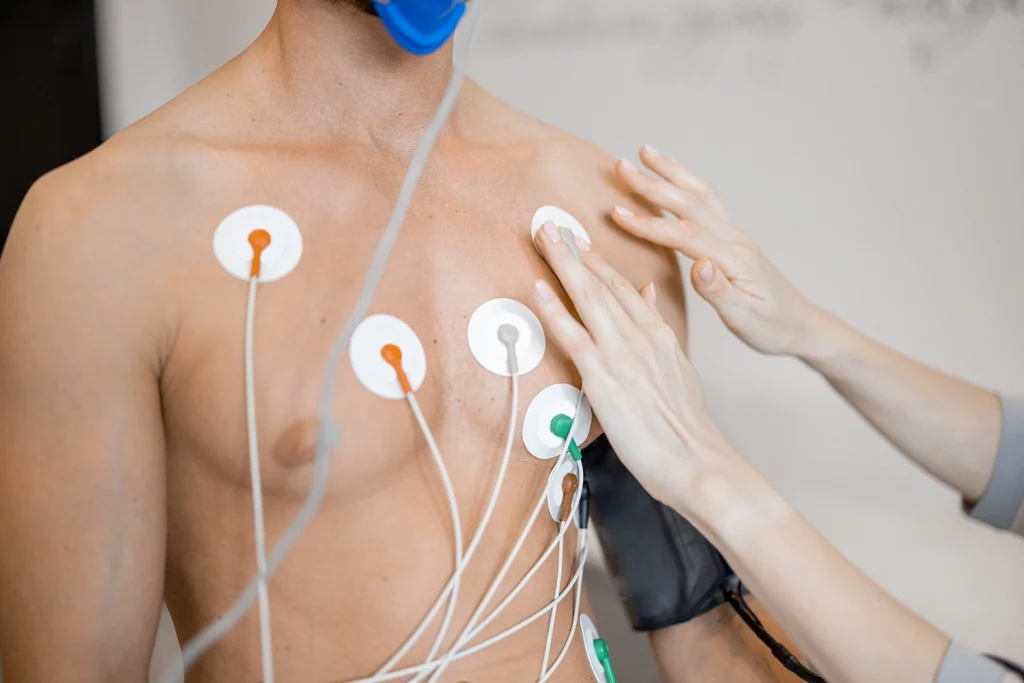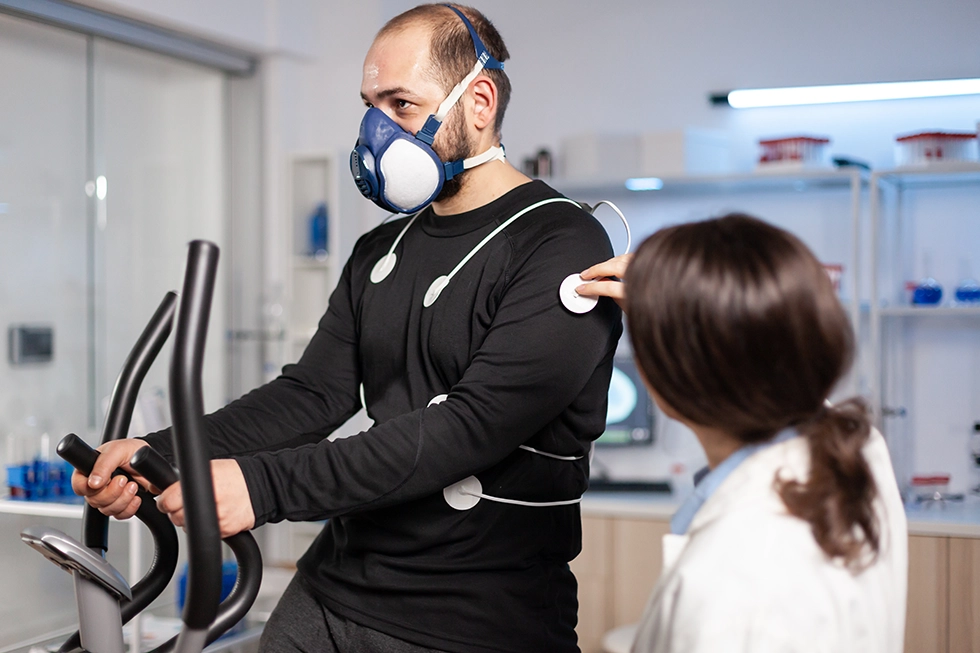Whether you’re a seasoned triathlete, a dedicated marathoner, or a weekend warrior, maximizing your training is vital to reaching your full potential and combating the inevitable slowdown caused by Father Time. The secret to unlocking this potential? Understanding your training zones and that all starts with measuring your VO2 Max.
Boost Your Performance and Stave Off Age-Related Decline with Targeted Training
Imagine your body as a powerful engine. Your VO2 Max is the maximum fuel (oxygen) an engine can burn during intense exercise like running. It’s the ultimate gauge of your fitness, telling you exactly how efficiently your body uses oxygen. Knowing your VO2 Max empowers you to tailor your training and recovery plans for optimal results.
How Do You Measure It?
The most accurate way to measure your VO2 Max is by visiting our office equipped with a metabolic cart. This high-tech tool analyzes your breath while you exercise, measuring your oxygen intake and output. The intensity gradually increases during the test until you reach your physical limit. Your oxygen consumption plateaus or even dips at this point, revealing your VO2 Max.
VO2 Max: Not the Only Star of the Show
While VO2 Max is a powerful predictor of running performance, it’s not the whole story. Two other key factors play crucial roles:
- Running economy: How efficiently your body uses energy to move.
- Sustainable VO2 Max: The percentage of your VO2 Max you can maintain without hitting your anaerobic threshold (the point where fatigue kicks in).
The Good News? You Can Improve!
Approximately 50% of your VO2 Max is determined by genetics, but the other 50% is all yours to shape! Different training methods work for different individuals. Some thrive on long, slow runs, while others benefit from high-intensity interval training.
VO2 Max for Longevity?
Recent research suggests a link between higher VO2 Max and a longer life span! So, training your VO2 Max isn’t just about faster runs; it’s about investing in your overall health and well-being.
Train Smarter, Run Faster, and Live Longer
While VO2 Max is a valuable metric, don’t forget about running economy and sustainable VO2 Max. Focus on optimizing all three, and you’ll be on your way to achieving your running goals and living a healthier, fitter life. Take the first step by measuring your VO2 Max and unlock the secrets to your unique engine. Remember, the road to peak performance starts with understanding your body’s potential.
Measure your VO2 Max
Unlock the priceless insights into your fitness by measuring your VO2 Max—it’s a step towards a healthier, fitter life.

We hope this information is helpful. At OC Sports and Wellness, we understand the importance of balancing your health amidst a busy lifestyle. We offer convenient options of scheduling visits, texting, or video chatting with your doctor. Let’s talk and work towards your well-being! We invite you to reach out: 949-460-9111



